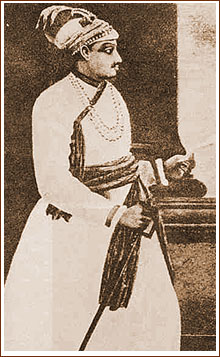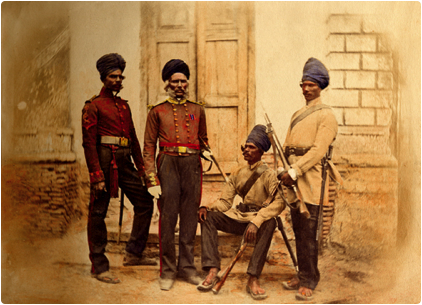
Siraj-Ud-Daulah, the last Nawab of Bengal before the British Occupation
-"UCLA Archives"
Painting of Amritsar Massacre ~"Ohio State University Archives", n.d.
Trade between India and Europe had been highly valued for a long time, so valued, that the British Empire entrusted the East India Company to take care of their trade, and regulate it. However, to regulate other companies, and to make sure they were in control, Britain overthrew the Nawab of Bengal, and installed their own “puppet ruler” in 1757.

Siraj-Ud-Daulah, the last Nawab of Bengal before the British Occupation
-"UCLA Archives"
They tried to take complete control over India. Over the next eighty years, through annexation and battles, the British empire successfully consolidated the majority of India under its imperial rule. The fact that the British had conquered the subcontinent did not mean that the Indians liked them. For example, the Sepoy Mutiny of 1857 occurred when sepoys, Indian soldiers for the British, tried in various ways to get back at the British such as refusing cartridges for guns to fight, and even attacking their British Supervisors. The Mutiny officially ended in 1859.

"India is a geographical term.
It is no more a united nation
than the Equator."
- Winston Churchill
Indian sepoys on duty ~"Imperial War Museums"
Great Britain heavily regulated India, and considered it more of a geopolitical tool than a country.
Even though British infrastructure and technology became widespread over India, British support and loyalty was always low. Protestors came and went but were often treated harshly; the most infamous ended in blood-shed, and is now known as the “Amritsar Massacre” or the "Jallianwala Bagh Massacre". In the spring of 1919, as tensions were high in the town of Amritsar, in India, a protest began, but it soon turned into turmoil as over 379 protesters were killed and 1,137 were severely wounded in just under ten minutes.